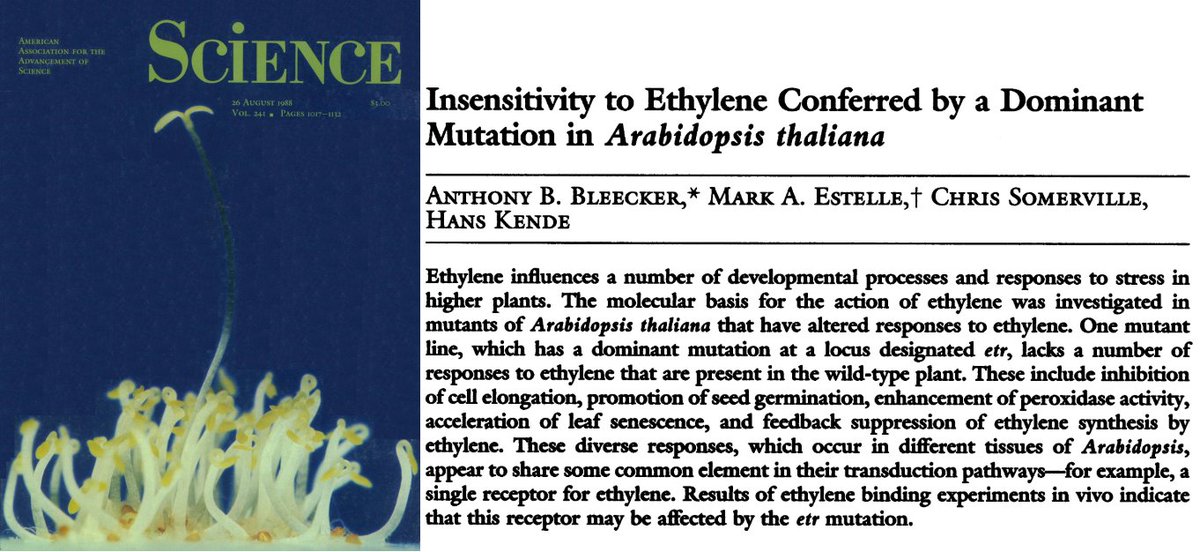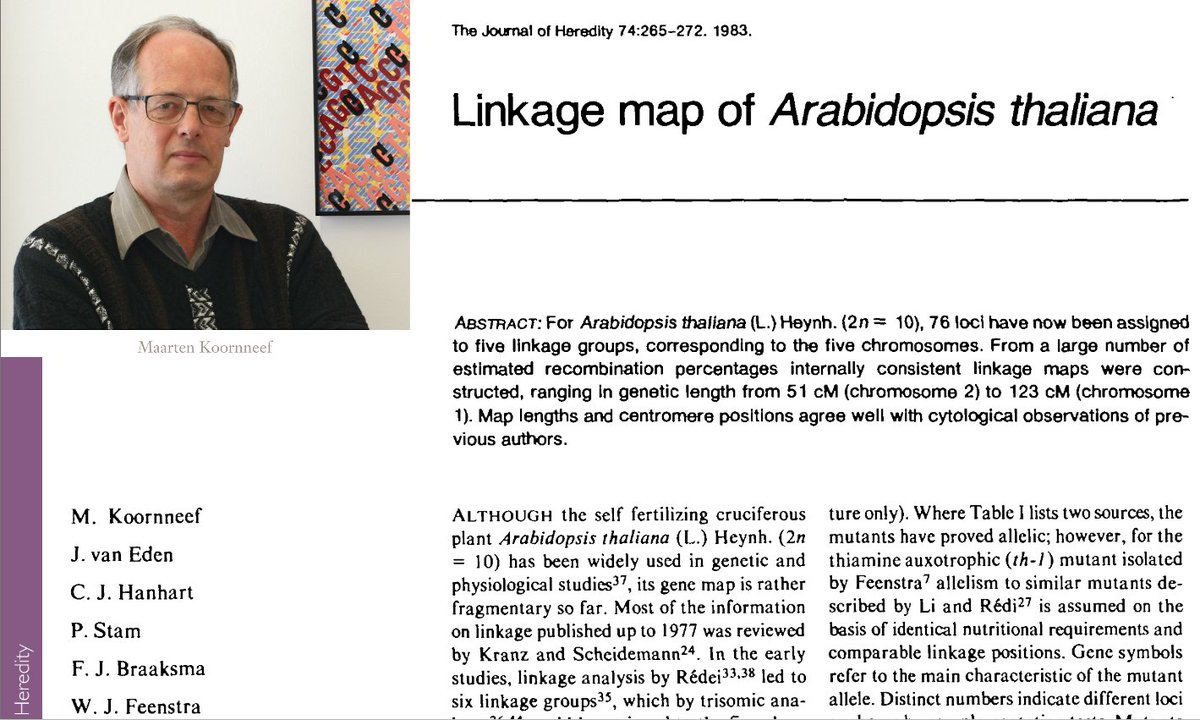#PlantScienceClassics #11: The GUS reporter system. In 1987 Richard Jefferson & colleagues from @michaelbevan565's lab published the first reporter system to monitor promoter activity in planta in the @embojournal: doi.org/10.1002/j.1460… 

In the 1980s it was possible to express transgenes in cells of different organisms, but visualizing & assaying gene expression was still problematic. The lacZ β-galactosidase was a commonly used reporter, but compromised due to endogenous enzymes breaking down its substrates too.
So Jefferson developed the Escherichia coli uidA-encoded β-glucuronidase (GUS) reporter during his PhD in David Hirsh’s lab @CUBoulder. Adding a GUS-substrate to Caenorhabditis elegans carrying the GUS-reporter led to a colorful precipitate in all tissues with GUS expression. 

Jefferson completed his PhD at a revolutionary time for the Plant Sciences. E.g., plant transformation & the CaMV35S promoter had just been established (see classics #6 & 9). So Jefferson decided to apply his GUS system to the creation of better performing transgenic crop plants. 

He therefore joined the lab of plant transformation pioneer @michaelbevan565 at the Cambridge Plant Breeding Institute, now part of @JohnInnesCentre. Together they established GUS as a reporter in plants, initially using the CaMV 35S & ribulose bisphosphate carboxylase promoters. 

They then used the GUS-reporter to analyze the activity of the patatin-1 promoter in transgenic potatoes in the world’s first field trial with a transgenic crop plant (beating Monsanto to this ‘First’ by 1 day!), finding that the field showed a higher variability than the lab. 

However, during his time in England Jefferson also observed a big change in how science was being performed. The huge plant science innovations in the early 80s, most notably plant transformation, resulted in a patenting frenzy, which led to a more secretive atmosphere. 

Not happy about this development, Jefferson decided to counteract this trend by making his GUS system available to everybody – a move which also resulted in the rapid uptake of the system in labs across the world.
Producing 10.000 GUS kits, containing the necessary plasmids & a detailed ‘GUS manual’, ready to use for anybody, they gave the system away for free (and license-free) to thousands of scientists via the mass-mailed Plant Molecular Biology Reporter newsletter.
This move made GUS one of the most widely used reporter systems in the world, and it also started Jefferson’s personal journey in the #OpenScience movement, which eventually (1992) led him to founding Cambia @CSIRO as an enterprise dedicated to making innovation freely available.
Cambia initially was a lab-based organization, developing & making tools available such as GUSPlus & the pCAMBIA vectors, or developing new bacteria able to transform plants, to circumvent the patent situation around agrobacterium-mediated plant transformation @nature in 2005. 

Since the early 2000s Cambia primarily provides an infrastructure to share biotech tools and navigate the licensing and patenting landscape around biotech innovations, via their Biological Innovation for Open Society (#BiOS) initiative.
For more, have a look at this article by Richard Poynder, based on an interview with Jefferson: poynder.blogspot.com/2006/09/interv…
And the article by Jefferson, ‘Science as Social Enterprise: The CAMBIA BiOS Initiative’ here: doi.org/10.1162/itgg.2…
And the article by Jefferson, ‘Science as Social Enterprise: The CAMBIA BiOS Initiative’ here: doi.org/10.1162/itgg.2…
• • •
Missing some Tweet in this thread? You can try to
force a refresh




















